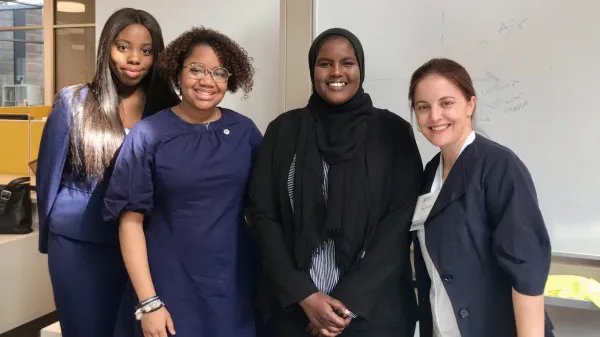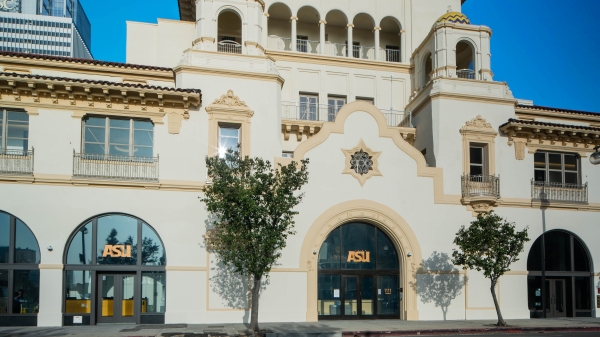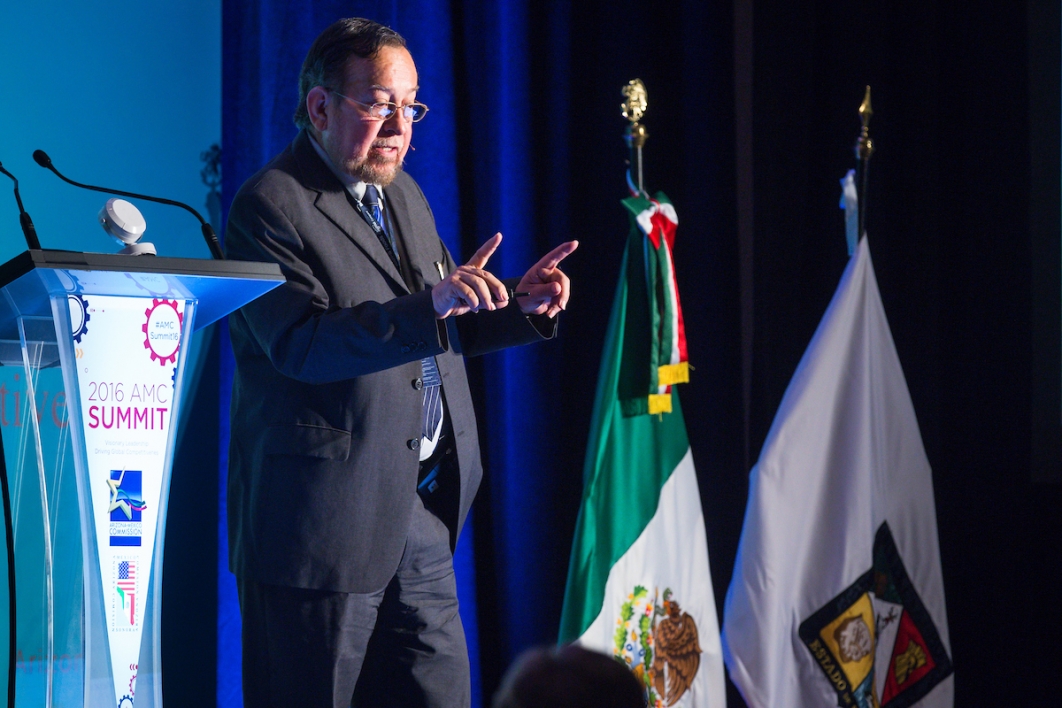Mexico COVID-19 model points to complexities of response
ASU academic builds Decision Theater-based model to help in future crises

When Mexico detected its first case of COVID-19 in late February, few could have predicted a rise in cases to 850,000 with 86,000 deaths to date. Like other countries, Mexico reacted slowly until the growing number of infections in April forced the government to mandate a lockdown strategy in May.
Now, a model built by an Arizona State University academic, who served as a federal cabinet member under Mexican President Vicente Fox, points out what could have been a different outcome if Mexico had acted sooner.
Hector Moreira Rodriguez, senior sustainability scientist with the Global Institute of Sustainability and Innovation, used proven methodology from ASU’s Decision Theater to identify variables and input them into the model to capture what happened, and to build a framework others can use in the future for similar situations.
Hector Moreira Rodriguez, senior sustainability scientist with the Global Institute of Sustainability and Innovation, addresses the Arizona-Mexico Commission Summit at the Fairmont Scottsdale Princess on June 23, 2016. Moreira discussed the potential for Mexico's economic future based on oil, gas and renewable energy capacity. Photo by Charlie Light/ASU Now
“The central idea of the ASU methodology is to analyze possible strategies and predict the medical, economic and social outcomes,” Moreira Rodriguez said. “Each strategy comprises a series of decisions directed at facing the coronavirus challenge in the best possible way. These variables can be under the control of the decision makers, such as closing restaurants, or not completely controllable, such as the percentage of people respecting lockdown directives.”
One of the most serious problems with challenges like the pandemic is reaching shared solutions to complex problems, particularly at the governmental level, said Moreira Rodriguez, who holds bachelor’s degrees in chemistry and chemical engineering from Mexico’s prestigious Tecnológico de Monterrey and a doctorate from Georgetown University.
“Society has been fractured into groups that not only have their own position, but also their own information and their own way of seeing the problem, without listening to the opinions and objectives of other groups,” he said. “In this context, ASU has developed a methodology to analyze complex problems and, through a consensus process, reach agreements that while not a hundred percent satisfactory to everyone are acceptable to all.”
Moreira Rodriguez previously led a successful project, in collaboration with Tecnológico de Monterrey, to analyze the future evolution of the Mexican energy sector. Based on the experience, he wrote a book to document the ASU decision-making methodology and the use of the Decision Theater in that capacity.
The model Moreira Rodriguez implemented for COVID-19 centered on the inputs and outputs of the social, economic and medical aspects of the pandemic using Mexico-specific data, while factoring in the country’s demographic and economic structure. The individual objectives of these aspects can clash.
“Total lockdown would be the best solution from a health standpoint, but quite disastrous from an economic standpoint and difficult to implement from a social standpoint,” Moreira Rodriguez said. “All three aspects need to be considered in any viable strategy to confront the crisis.”
Social inputs used in the model include acceptance of policies, preventive behaviors and groups most in danger. The economic aspect considered business preventive measures, closure of sectors and economic regulations, among others. Medically, Moreira Rodriguez factored in the infection process, the effect of the virus on different groups, availability of intensive care, number of total deaths by group, etc.
“Once the model has been completed, with all its input and output variables, different strategies are fed into the model and their effects on the output data are analyzed to select the best possible strategy,” Moreira Rodriguez said.
After a strategy is selected, it must be analyzed from an operational standpoint, he said. Some factors to consider include: which sectors to shut down or exempt; how closed down sectors will be, for example restaurants may close down completely or only offer take out service; recommended preventive behavior, such as masks; and operating rules for each sector, including government, schools and entertainment.
Moreira Rodriguez examined Mexico’s response and impact. The country implemented a lockdown in May, closing down nonessential activities, though not all. By June, the government began reopening with limits and some recommendations, but this gave people a sense of security leading to increased infections. Reopening continued in July with more restrictions for individuals and businesses. The pandemic plateaued in September as citizens adapted and accepted masks and social distancing, while deaths reached 70,800.
“People reacted in different ways as time progressed,” Moreira Rodriguez said. “Generally, they followed government requests, but never completely, nor continuously; the process could be described as a see-saw. Unfortunately a large percentage of the population was unable to follow regulations, having to go to work to put food on the table.”
Moreira Rodriguez plugged different strategies into the model using some estimations to assess changes in the outcome. These included a faster government response, instituting policies to reduce contacts, and implementing strict regulations throughout instead of a one-month lockdown. He also analyzed alternative social strategies, such as enhanced compliance with mask usage and social distancing.
Based on the different strategies, Moreira Rodriguez found the model predicted that a faster government response could have reduced the probability of infection from 3.6 to 2.9, resulting in 7,450 deaths by September instead of 70,800. Instituting policies to reduce contacts by one person per day could have limited fatalities to 8,619.
“Small changes could have accomplished big results,” he said. “However, in assessing what policies could, or should have been implemented, it is important to note that as the pandemic progressed we gained knowledge, such as the efficiency of masks or the existence of, and transmittance from, asymptomatic carriers, and now understand more clearly what should have been done, hindsight always being 2020.”
The general model used to evaluate the impact of COVID-19 strategies in Mexico can be used for other situations and other countries, Moreira Rodriguez said.
“It is tangible proof of the use of the ASU methodology and the Decision Theater,” Moreira Rodriguez said. “The next step is to convince a state, or a country, to use not only the model but the entire ASU planning process, since it is a proven general methodology.”
More Law, journalism and politics

School of Politics and Global Studies director's new book explores mass violence
Why do people commit atrocities and why are certain groups, including religious and ethnic, more vulnerable to large-scale violence? These questions are explored in a new book by Güneş Murat Tezcür…

ASU faculty contributing to improvement of Wikipedia
Many academics have a love-hate relationship with Wikipedia. While the website has information about almost anything you can imagine, the credibility of that information is sometimes suspect. Tracy…

ASU Law students gain vital experience through Los Angeles location
Students at the Sandra Day O’Connor College of Law at Arizona State University may be concentrated in the school’s downtown Phoenix headquarters, but they have more choices than ever when it comes to…
